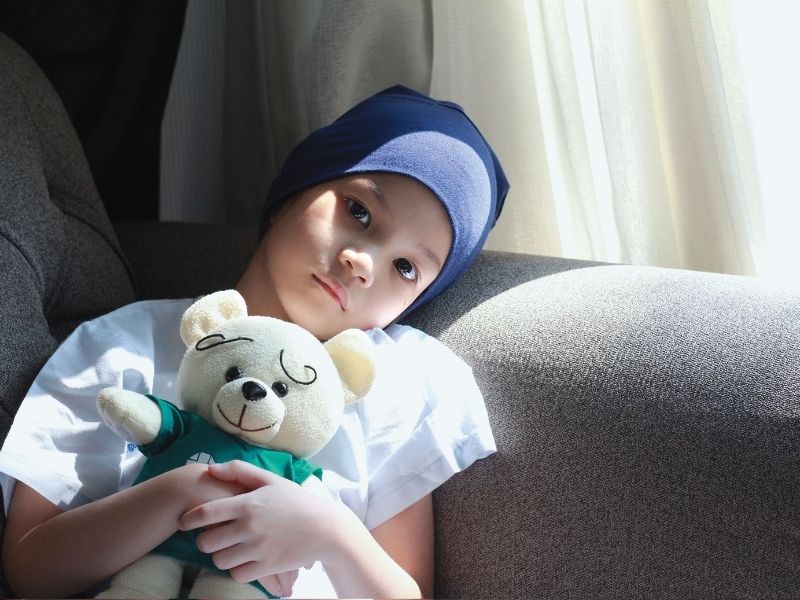The outbreak of the coronavirus pandemic has caused diagnostic delays and made it challenging for medical practitioners to deliver timely cancer treatment to children

 – Dr. Stalin Ramprakash is a paediatric haematology, oncology and BMT consultant at Aster CMI Hospital, Bengaluru
– Dr. Stalin Ramprakash is a paediatric haematology, oncology and BMT consultant at Aster CMI Hospital, Bengaluru
Childhood cancer comprises almost 3-5 percent of the total cancer cases in India. If diagnosed early, 75-90 percent of cancer in children can be treated successfully. Unfortunately, research shows that one of two children with cancer dies undiagnosed and untreated. Lack of awareness of commonality of childhood cancer and late detection brings down the survival rate. Sadly, the outbreak of the coronavirus pandemic has caused further diagnostic delays and made it challenging for medical practitioners to deliver timely cancer treatment. Moreover, it also increases the chances of relapse as follow-ups are compromised. Children suffering cancer have weak immune systems which makes them more vulnerable to the Covid-19 virus and therefore they need extra care and attention.
Children’s cancers are different from adult cancers in type and treatment. They are generally aggressive and need intensive treatment, but have a much higher success rate than adult cancers. But early detection is critical for success in treating childhood cancers. This requires accurate diagnosis, adhering to treatment protocols and procedures, providing high-quality supportive care and anticipating and managing complications swiftly.
Childhood cancer causes
In children, cancer is usually caused by damage in the DNA. Unlike adult cancers where lifestyle changes — increased junk foods intake, reduced physical activity, obesity, alcoholism, tobacco abuse, and environmental pollution — result in increased risk of contracting this deadly disease.
Some studies have shown that smoking in front of children might increase the risk of their contracting cancer. Also, environmental factors such as radiation exposure, pollution, or environmental disasters such as the Bhopal gas tragedy have been linked to childhood cancers. Very rarely, a family history of cancer could predispose future generations to increased risk. Yet, most childhood cancers don’t have a known cause.
Common types of cancer in children
According to the World Health Organisation, the most common type of childhood cancer is leukaemia, which accounts for around 40 percent of the cases. Others include brain tumours, lymphoma, kidney tumours, and tumours arising from left-over primitive cells such as neuroblastoma and retinoblastoma, which is a type of eye cancer.
Childhood cancer symptoms
- Unexplained fever lasting for more than three weeks
- Unexplained bone or joints pain
- Bleeding under the skin, gum or nose bleeding
- Inability to urinate, or blood discharge during urination
- Unexplained lump, firmness or swelling anywhere in the body, which is increasing in size
- Persistent headaches, abdominal and/or back pain
- Persistent vomiting
- Sudden unexplained seizures or change of behaviour or gait disturbance
- Onset of squint or double vision or head tilt
- Breathlessness and/or breathing heavily
- Frequent infections or flu-like symptoms
- Chronic fatigue and listlessness
- Unexplained weight loss
- Blurring or dimming vision
It’s hugely upsetting for parents to learn that their child is diagnosed with cancer as treatment entails long, arduous, grueling, and heart-wrenching therapy with the dreaded possibility of relapse. Parents managing recurrent children’s cancers often experience emotions of disbelief and fear with some suffering depression and anxiety, and difficulty in sleeping, concentrating, and loss of appetite. Professional counseling as well as support from the extended family and friends goes a long way in enabling parents to cope with and care for children with cancer.
Covid 19 precautions
 Risk of exposure to SARS-CoV-2, either in hospitals or community settings, is causing families of children with cancer widespread anxiety. According to standard medical guidelines, families should practise basic respiratory hygiene and avoid contact with people suffering illnesses to reduce the risk of transmission among children.
Risk of exposure to SARS-CoV-2, either in hospitals or community settings, is causing families of children with cancer widespread anxiety. According to standard medical guidelines, families should practise basic respiratory hygiene and avoid contact with people suffering illnesses to reduce the risk of transmission among children.
Maintaining social distance is also highly recommended to limit potential exposure to the virus. Hospitals should restrict the number of people visiting oncology departments and use telehealth medicine for non-critical outpatient treatment. This will enable children suffering cancer to receive scheduled treatments and follow-up care.
While cancer treatment for children has a high success rate, delays in diagnosis, high medical expenses, lack of universal high-quality health care/insurance, limited access to cancer care centres and abandonment of treatment after diagnosis or during treatment are significant reasons why four out of five Indian children do not survive cancer. However, there are many success stories of childhood cancers being cured. Therefore, we need to do our best to provide children diagnosed with cancer the best possible care and treatment.























